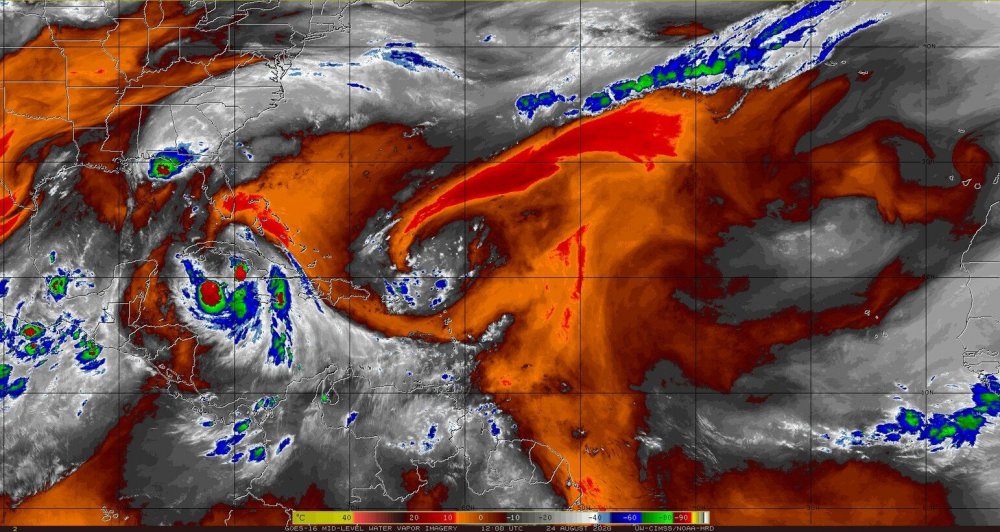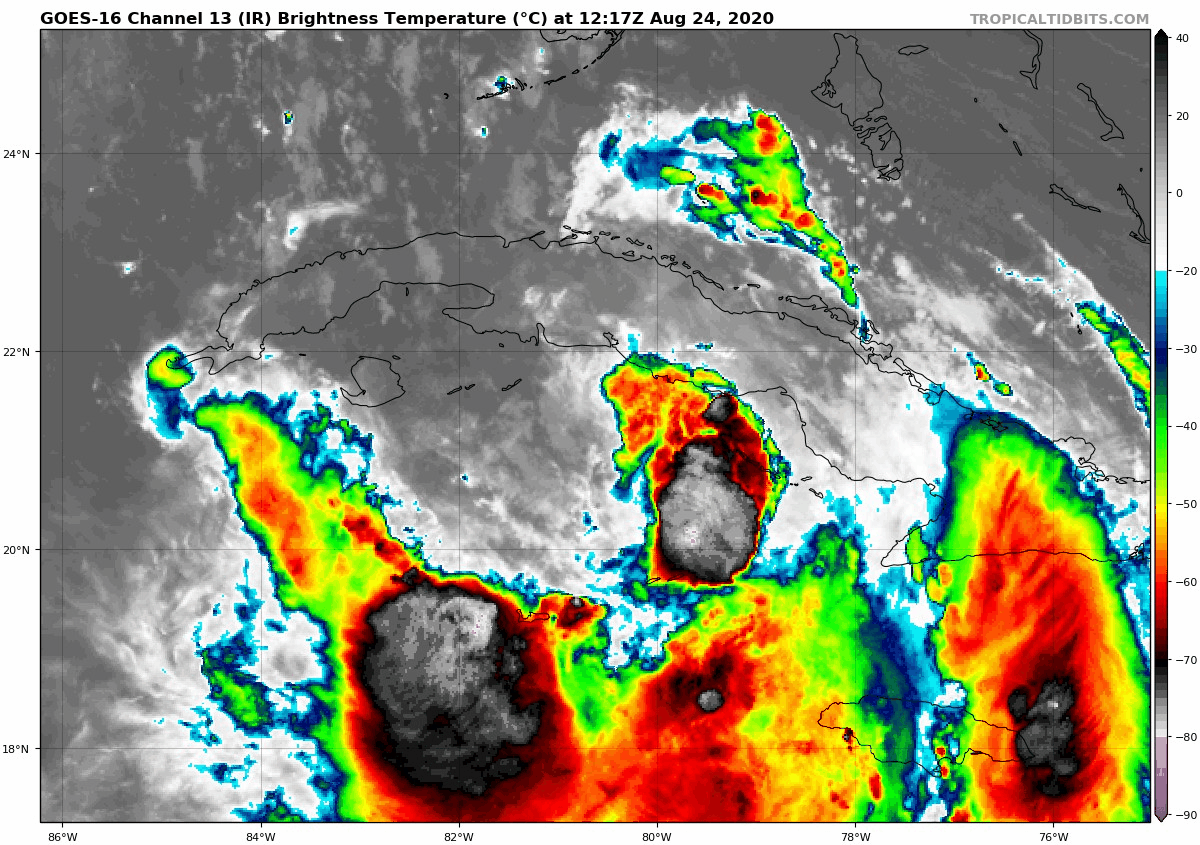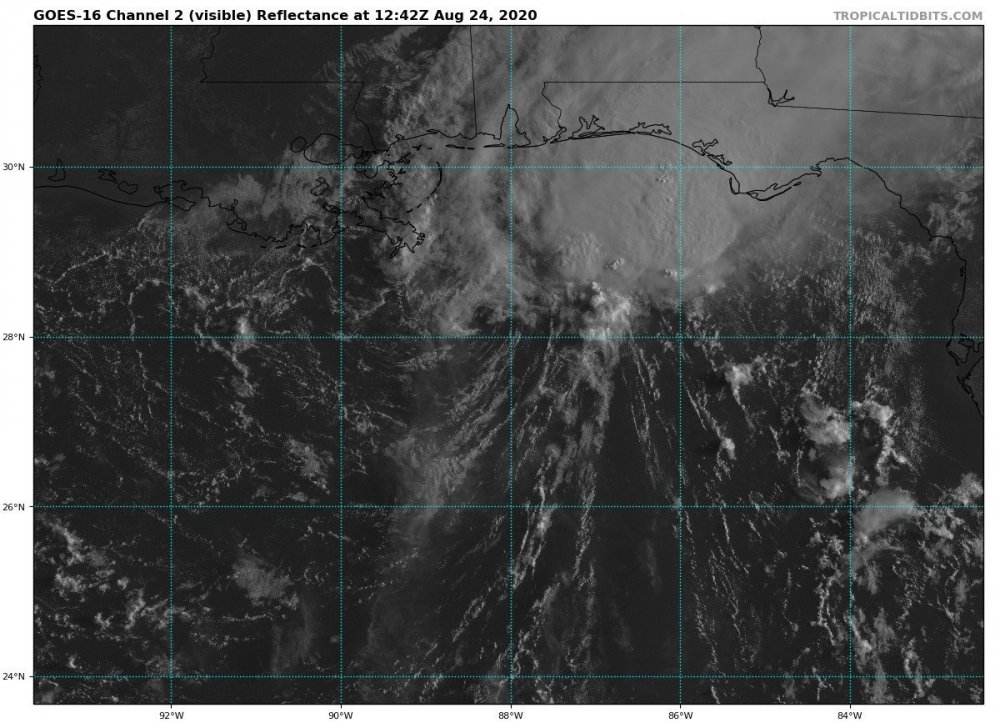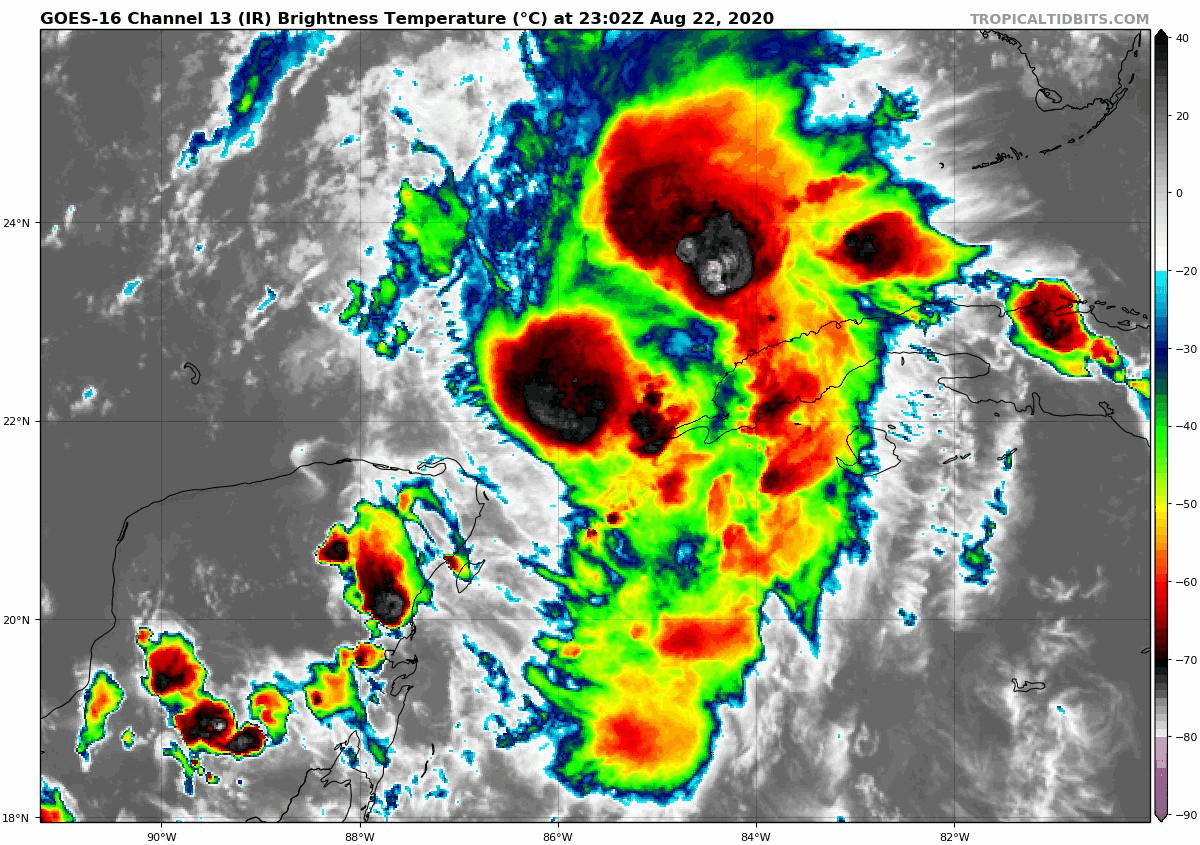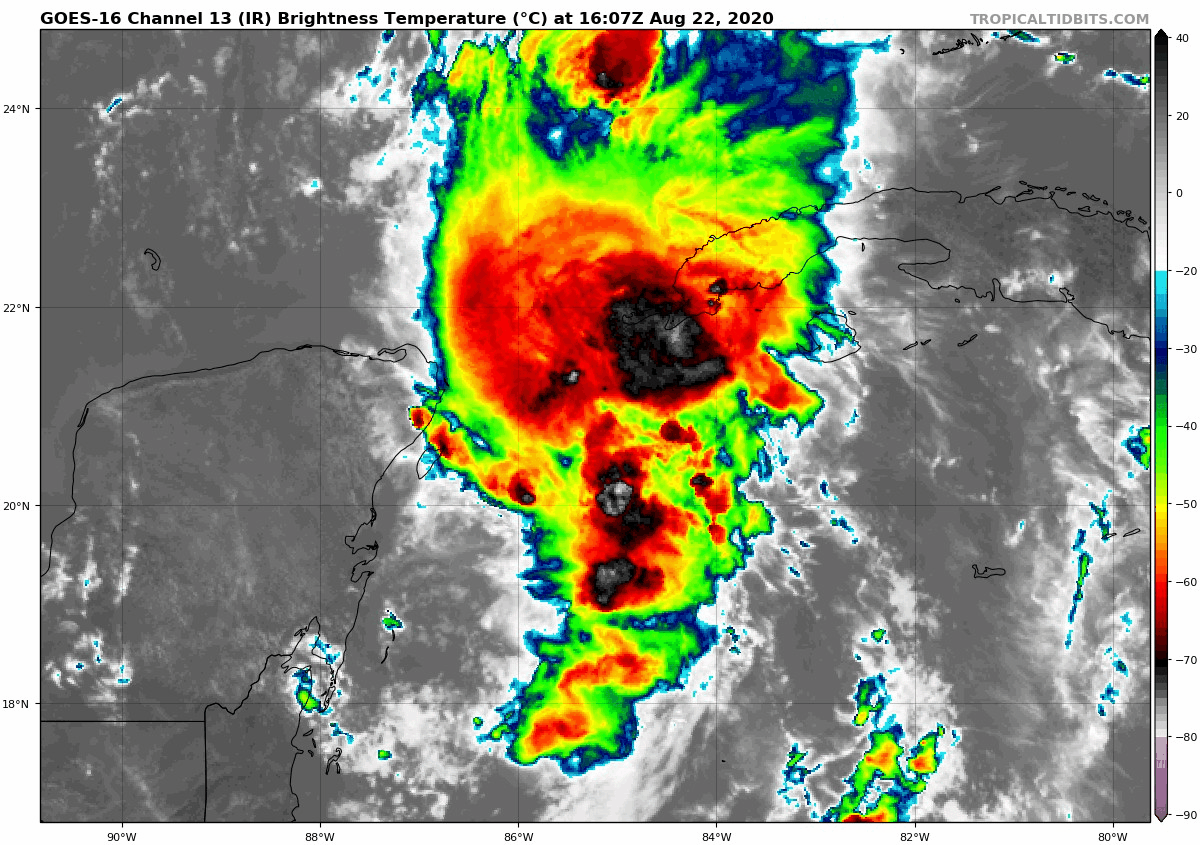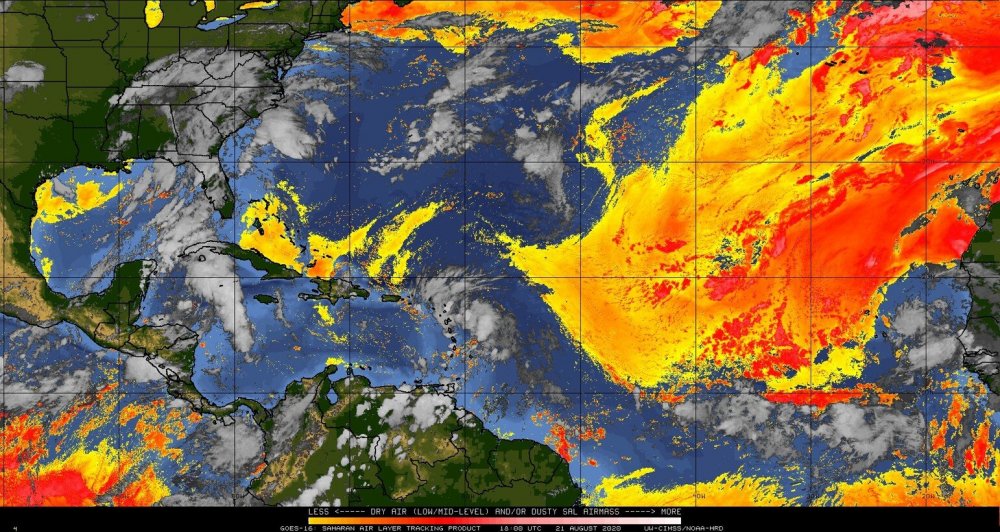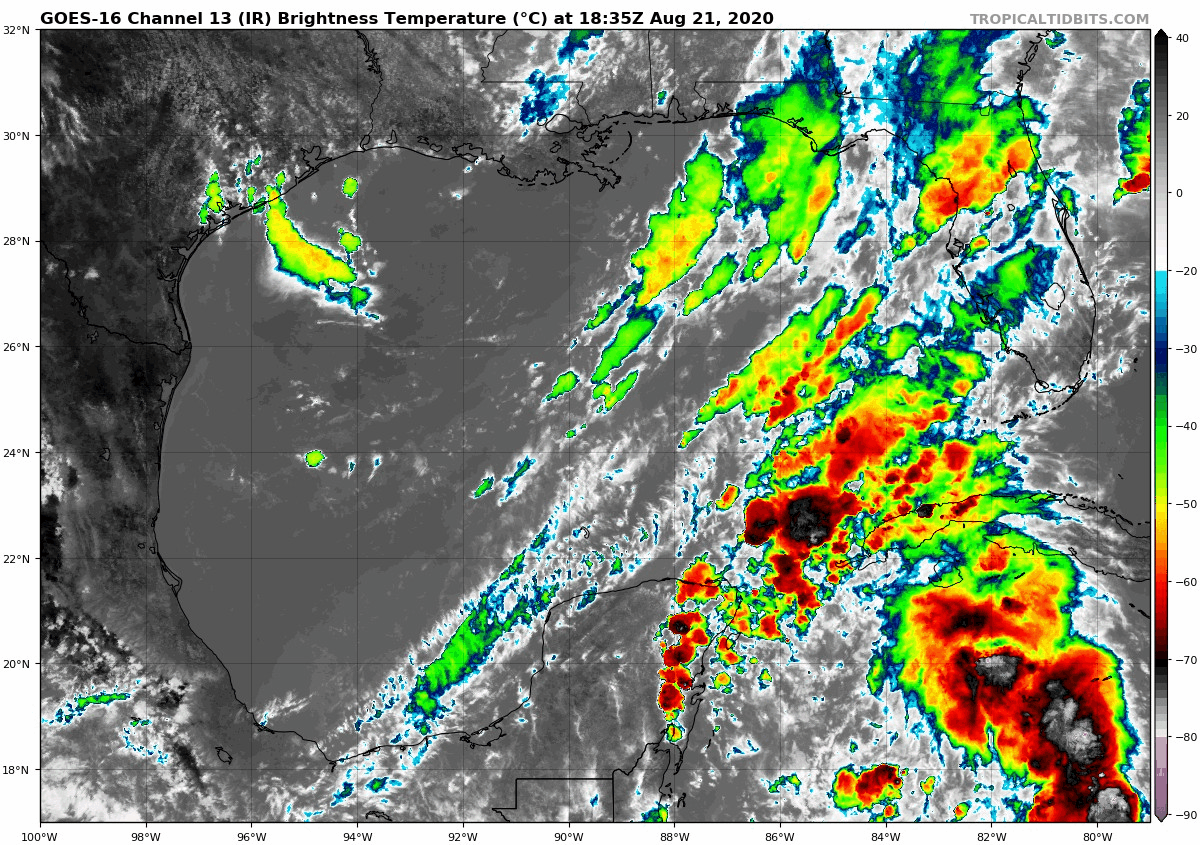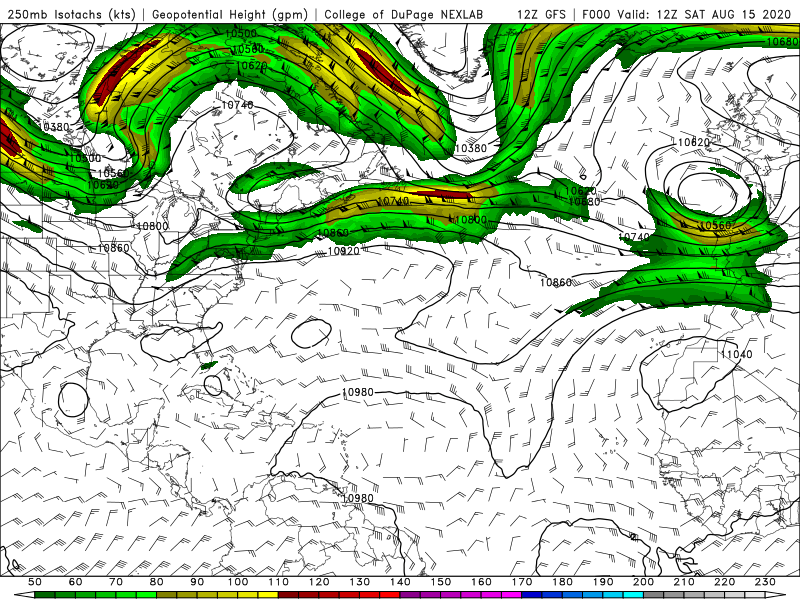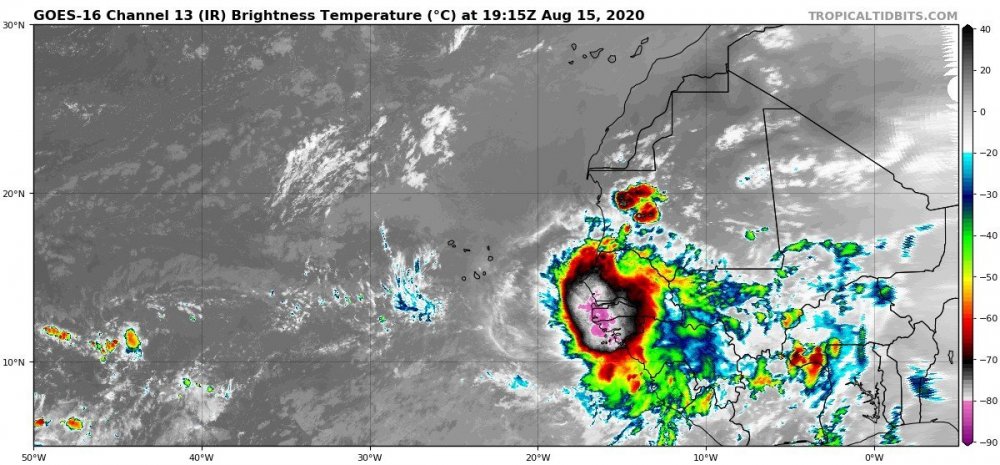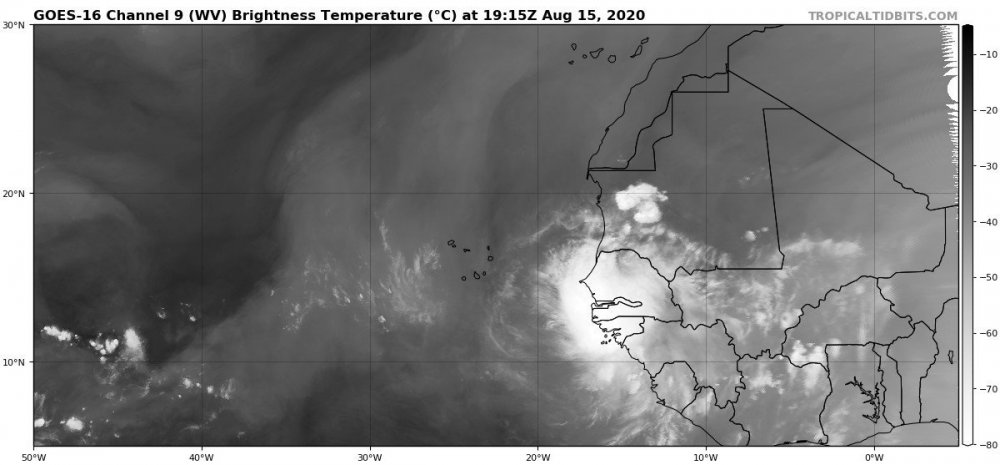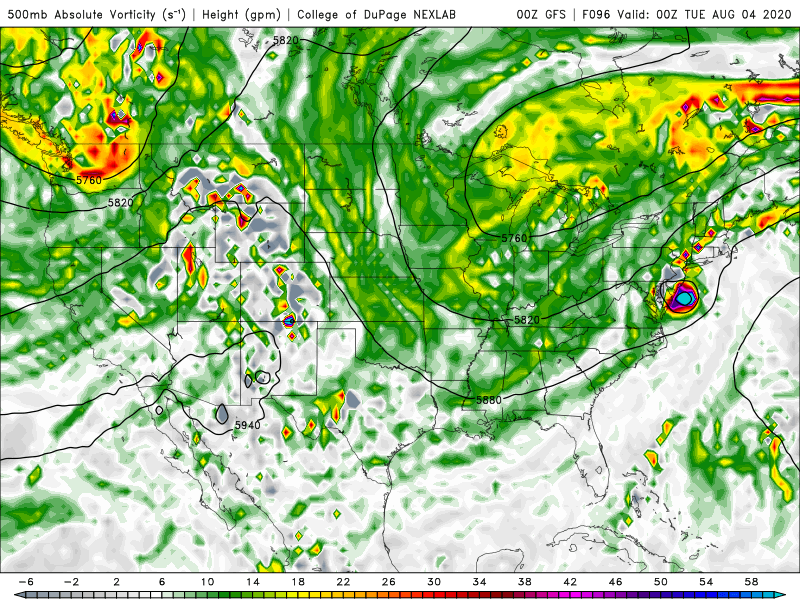
vortex95
Meteorologist-
Posts
347 -
Joined
-
Last visited
Content Type
Profiles
Blogs
Forums
American Weather
Media Demo
Store
Gallery
Everything posted by vortex95
-
METAR: KORK - North Little Rock AR KRVJ - Reidsville GA KT69 - Sinton TX PHHN - Hana HI PHMU - Kamuela HI RAOB: 72413 - Sterling Field VA 38.97/-77.48 89m
-
Not it wasn't personal. Just calling it as I saw it in the here and now, and looking at the synoptic pattern. Laura had been struggling it seemed forever, and I didn't see the overall environment changing much today. Dry air was still present just to its NW and shear was forecast to increase. But TCs are strange beasts, and small-scale factors can take over since were are dealing with TC inner cores, which are often on the mesoscale, so the synoptic factors can become a non-issue at times. As everyone knows, intensity forecasting for TCs is probably one of the most challenging aspects of the field.
-
Yes, I know. Laura is doing what Harvey and Michael did. But at the time of the above post, doing a nowcast from that was not that unreasonable. However, the atmosphere is always throwing curves at you and all us of will be burned some of time. This is Laura's first RI, not a system that got strong early in its existence. Florence in 2018 was different. Multiple ERCs well before landfall, so it had expanded in size with the wind field spread out, and that's one reason why it didn't intensify near landfall despite going over the Gulf Steam (weakened a lot in fact). It's easier to tighten up a TC the first time (no RI prior in its existence). Laura had struggled all along and now makes its move at the last min.
-
I've talked about some of the below before, and others have posted some of the content below, but I'd thought I'd update and add a few items to take a look at things as a whole. Comments/input welcome! ---------- Macro was never that impressive on satellite. Only reached minimal hur strength, and now it's getting torn apart by shear. LLCC fully exposed now, and it might not even make landfall. Either way, overall impact here should be minimal, so not the doomsday 1-2 punch as hyped for the Gulf Coast. Laura has been struggling all along. Yes, it held together well over Hispaniola, but that b/c it didn't have much to lose. A large weak system encountering an island with tall mountains is not the same as an intense system with a tight inner core doing the same (Isaias same situation as Laura). Also, the upper-level outflow yesterday for Laura was quite good. However, today northerly shear has degraded the sat appearance, and it is a mess. Yes, it should eventually get it act together in the GOMEX, but Macro and Laura continue the trend of ATLC systems that have struggled almost continuously throughout a large part of their existence, and Macro ends up being another "junk" storm overall, not getting that intense, struggled with shear and dry air a significant part of its existence, and doesn't contribute to seasonal ACE much. Does anyone find this odd? Where are the long-track classic intense Cabo Verdes? No hurricanes in the MDR yet. Here is a GOES-16 EIR loop on August 18th showing a robust wave over western Africa. I realize the parallax makes the cloud tops look colder than that actually are, but nevertheless, it was a decent wave. https://drive.google.com/file/d/18gCoMbIRVuiJbOe1kEVfRcLEsof6CYVT/view?usp=sharing And this is what it looked like on August 22nd. All the convection is gone. Seems like the SAL did a number on it. https://drive.google.com/file/d/1CInDEDq51Amti0bQh6RbrUvDfSYFRp1C/view?usp=sharing So would you expect such a dramatic suppression of a strong tropical wave now that the peak season has started for the ATLC? It just seems a bit too dramatic when the MDR overall parameters are good. Even in the absence of favorable MJO phase, it doesn't necessarily mean the MDR activity is across the board suppressed, or at least not *this* suppressed. Attached is an ATLC GOES-16 split window image 24/12z. The SAL is alive and well in much of the subtropics and tropics. Also attached is an ATLC WV image from 24/12z. Very dry air at mid-levels cutting S right through the western MDR, and the upper low NE of the Lesser Antilles is forecast to move WSW and be in the central Caribbean in a few days. That's going to shut down any activity in this area. Another image attached is the 24/06z GFS 84 hr 250 mb fcst showing another upper low NE of the Lesser Antilles with its shear axis extending to Trinidad. This may limit significant TC development in the MDR this coming week. This would bring us to the end of August. There are ATLC seasons where many TCs significantly develop well E of the Lesser Antilles, and seasons where you get more "home grown" TCs in the Caribbean or Gulf of Mexico. We seem to have an odd hybrid season thus far, w/ many short-lived tropical storms and a number not forming in the tropics or subtropics, TCs in the MDR struggling, and all our hurricanes either in the GOMEX or off the SEUS coast. You would think by now we'd have at least one or two long-tracked strong Cabo Verde hurricanes. Many Augusts have had them. So I ask this question, can there be "too much of a good thing", for the lack of a better phrase, present? As I mentioned before, we had early season indications that were at record or near record levels. Can this result in other factors being introduced when we are in record territory? For instance, the SAL. It seems to be sticking around and a factor still, what if it ends up not waning like it typically does this time of the year and continues into Sep? That would continue to have significant impacts on TCs in the MDR, regardless of the MJO phase. Or a persistence of TUTTs near and in the MDR, like we are going to see the next 4-5 days? I realize there may be no real answers to my questions here, but looking at recent weeks and the here and now, you can't help wonder something might be awry (i.e. something happening we have yet to observe large-scale in an ATLC TC season). The atmosphere is full of surprises!
-
This is what I have been hypothesizing. Conditions are *so* favorable, somehow it has the reverse effect? All global oscillations and patterns vary in magnitude and interact in many ways. Who's to say there can not be a combination where "too much of a good thing" occurs? Some unexpected side-effect of the record or near record large-scale indicators that the Atlantic has had early on stating it should be very favorable for TC activity? Yes, we got a lot of NS so far, but where is the quality (intensity)? The SAL has been rather strong this year, and it is still evident in the MDR (it wiped out completely the most recent AEW that looked impressive when first coming off land). Typically the SAL wanes by mid-August. What if it continues another few weeks? That may seriously impact TC potential in the MDR.
-
Problem we are seeing with Macro is similar to Laura, just not quite as bad. Note how recently convection waned over the center, re-fired in a small blob, and now is waning again. That's a sign of dry air entertainment. Also, the larger more intense convective blob just to its NE -- surrounding large blobs like this discrete from the center are not good b/c that area will collapse and send out outflow at low levels into the LLCC. Also, it interferes with the anticyclonic smooth outflow aloft that tries to get established over the central convection.
-
If Macro is a hurricane now, it is still not that impressive on satellite. Minimal banding and transient convective blow-ups. It is also elongated N-S. 12z SHIPS output shows significant shear by 18 hr with RH dropping below 60%. As mentioned in previous posts, it is likely going to get torn apart as it moves further N esp. due to its small size. http://hurricanes.ral.ucar.edu/realtime/plots/northatlantic/2020/al142020/stext/20082212AL1420_ships.txt
-
NHC noted in the 18z update that conditions in 3-5 day period will not be favorable and have lowered the development chances to 30%. A large part of the tropical Atlantic is devoid of deep convection, as the SAL/dry air dominates. Look at how far S the ITCZ is displaced. As I mentioned in another thread, something does not seem right here. Everything is supposed to favorable for Cabo Verde TCs, but we are still dealing with significant large-scale issues and we are in climo peak period now. Should this be happening in a hyperactive season? Time will tell.
-
Really bizarre looking now. Yesterday it was a large cluster of convection. Now an exposed LLCC and a large band of convection well-removed to the NE. This is what you'd expect a TS or min hurricane to look like after it moved over the Yucatan, not before (hollowed out center)! Also, peripheral convection seems to be driven more by the deep trough to the NW.
-
It's not always the best practice to rate an AEW for TC potential later while it's still overland because its convection is mostly diabatically driven. This is what we see with the wave on the west African coast now. Also, looking at the WV and 250 mb analysis, there is TUTT not far to the W. So we can see why the global models don't do much with this wave. One other thing, due to parallax of GOES-16, deep convection in this part of its view will look more intense than it really is.
-
K0A0 - Truth or Consequences/Spaceport NM (alias code) http://www.airnav.com/airport/9NM9 K1S3 - Forsyth MT KCYD - Mississippi Canyon 807 LA 28.169 / -89.223 46m KE41 - Big Lake TX KJSY - Joseph OR KK82 - Smith Center KS KMJD - Picayune MS KNRN - Norton KS KSMD - Fort Wayne/Smith IN KVGC - Hamilton NY KVHN - Van Horn TX Site ID Change: K40J to KFPY (Foley FL)
- 1 reply
-
- 3
-

-

-
Indeed! And it shows things are kind of messed up in the ern tropical Atlantic. Where is the deep easterly uniform flow that is almost always present this time of year that brings all African waves steadily westward? If this anomalous flow sticks around for awhile, it is going to put a dampener on some sig Cape Verde TC potential.
-
Exactly. Couldn't have said it any better. Everything has to be practically perfect for a TC of at least min hurricane intensity to make landfall on LI or the New England coast. One thing is off (i.e. not moving fast enough, trof to W not sharp enough, first landfall down the coast, etc) it greatly reduces the overall threat and impact, at least from a wind and surge point. Rainfall can still be high impact, but you don't need a hurricane for that anywhere. It also helps if the hurricane is intense off the SEUS coast to begin with. It's been 29 years since the last hurricane made landfall on LI or the New England coast, by far the longest period on record going back to 1851. This shows how hard it can be during certain cycles/patterns. Of course, between 1938 and 1960, we got 5 hurricanes, all stronger at landfall than any of the 4 hurricanes the area has had since 1960. Feast or famine it seems!
-
Still skeptical on the more W track. The trough that evolves over the ern U.S. is not digging and is positively tilted. That's not how you typically bring a TC to SNE. Basically it is just riding a channel in the mean flow, not drawn in by backing flow. One thing I have noticed empirically over time, is that these things tend to recurve out sharper than any model forecast in a synoptic set up like this. You have to find a good reason why it will *not* recurve out sharper than forecast. Here's the pattern that brought Bob up. It was focused, digging s/w trof that gave SNE decent +RA/+TSRA only 24 hr after Bob departed. And the next image is the 00z GFS for 96 hr. It's not the same. In Bob's case, you had a dumbbelling effect.
-
K00U - Hardin MT K38S - Deer Lodge MT K3U3 - Anaconda MT K4U6 - Circle MT K6S8 - Laurel MT K79S - Fort Benton MT K7S0 - Ronan MT K7S1 - Twin Bridges MT K7S6 - White Sulphur Springs MT KCII - Choteau MT KCPF - Hazard KY KEZP - East Cameron 321A 28.220N 92.784W 31m KPO1 - Poplar MT KPWD - Plentywood MT KS21 - Sunriver OR KS59 - Libby MT KS71 - Chinook MT KS85 - Culbertson MT KU55 - Panguitch UT KUKL - Burlington KS
- 1 reply
-
- 3
-

-

-
K2IS - Clewiston FL K41U - Manti UT K4F2 - Carthage TX K77S - Creswell OR K2R9 - Kenedy TX KHMT - Hemet CA KMHP - Metter GA KMIO - Miami OK KPJC - Zelienople PA KPZZ - Ship Shoal 241 LA 28:26N 91:02W 40m KT41 - La Porte TX KT74 - Taylor TX KX26 - Sebastian FL KXWA - Williston ND (replaces (KISN)
-
CoastalWx won't be happy until hell freezes over!


